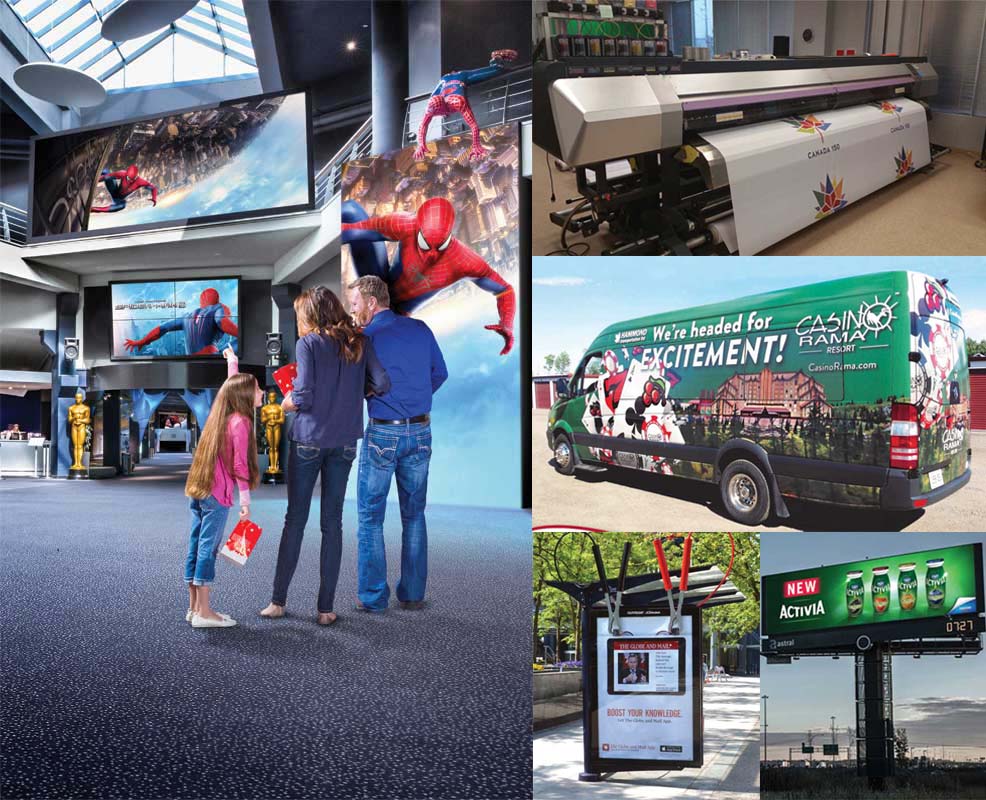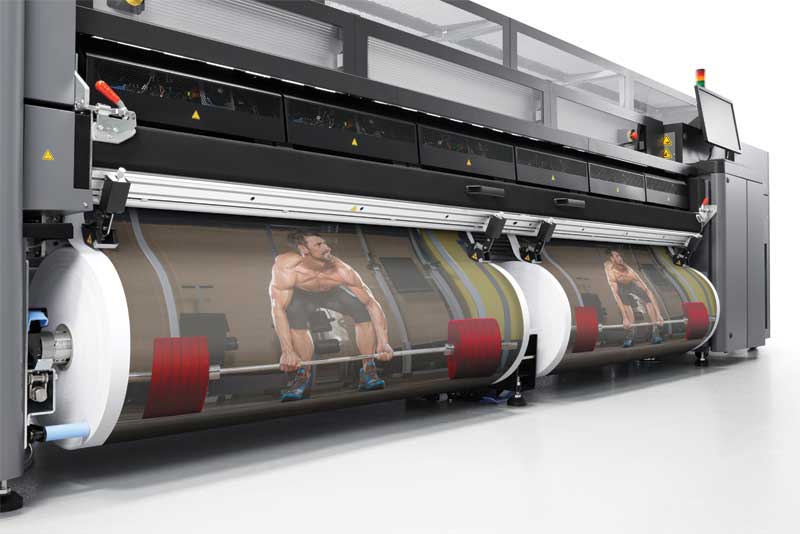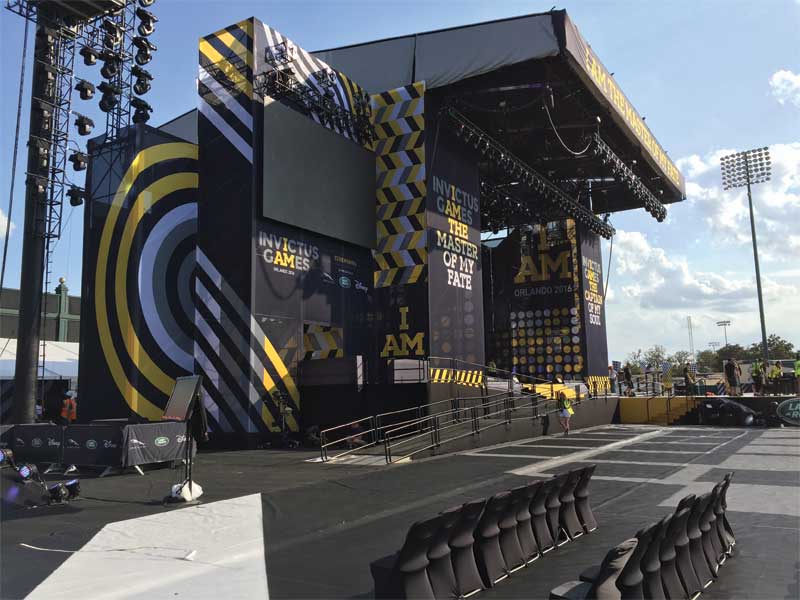2018 State of the Industry Report
by all | 7 December 2017 2:38 pm
 [1]
[1]File photos
Compiled by Peter Saunders
As Canada’s economy continues to grow, companies that produce signs, graphics and related visual communications media are on pace to benefit in the year ahead.
The International Sign Association (ISA) is certainly forecasting growth through 2019. Its quarterly economic reports, compiled by market research firms IHS and Vandiver and Associates and sponsored by the National Association of Sign Supply Distributors (NASSD), assess a range of commodities, supplier markets and end-user markets.
By way of example, the end-user market for digital signage has seen growth relating to increased production at the supplier side of large-scale liquid crystal displays (LCDs), light-emitting diode (LED) arrays and organic LED (OLED) displays. With this trend, IHS anticipates many existing static displays will be converted to digital, particularly with the advent of more affordable LED screens for outdoor installations.
Illumination
The worldwide value of the individual LEDs used in illuminated signage continues to increase at a steady pace for both indoor and outdoor applications, according to the latest research from ElectroniCast Consultants (see page 34). As was the case last year, the company predicts this market will keep increasing in value by an average annual rate of 9.5 per cent, to top US$3.6 billion in 2020.
Different LED packages represent significantly disparate values in various sub-markets. With respect to indoor digital signage, for example, ElectroniCast forecasts the combined value of LED ‘cluster screens’ and LED-backlit liquid crystal displays (LCDs), as complete systems, will more than double over a 10-year period, from US$18.2 billion in 2016 to US$37.4 billion in 2026.
The value of all LED-based subsystems used in outdoor on-premise signs, meanwhile, is expected to increase from US$3.5 billion to US$4.7 billion over a five-year period, from 2016 to 2021. Among these ‘piece parts,’ tile module subpanels used in LED cluster screens lead in relative market share, followed by LED illumination in traditional sign boxes, channel letters and displays.
 [2]
[2]ISA predicts wide-format graphic production will nearly double across North America in the next three years.
Photo courtesy HP Canada
Wide-format printing
The production of wide-format graphics, which represents the lifeblood of many sign shops today, is expected to nearly double across North America over the next three years, according to ISA—but with this boon will come challenges in terms of understanding and addressing new, significant market opportunities.
InfoTrends recently compiled a white paper for ISA, Wide Format Print Trends, Opportunities & Challenges: Identifying Areas of Untapped Potential in the Wide Format Market. This report suggested print volumes for wide-format graphics spanning the U.S., Canada and Mexico would rise from 460 million m2 (4.9 billion sf) in 2015 to about 849 million m2 (9.1 billion sf) in 2020.
To help sign shops take advantage of the increasing demand for wide-format graphics, the report explored technological advances, opportunities in the ‘soft signage’ market for digitally printed textiles, competition from commercial printing firms, packaging production, increased throughput and single-pass inkjet printing.
“Survey respondents who were currently offering wide-format printing services were quite optimistic about their volumes,” says Sandy Smith, communications representative for ISA. “There is clearly a great deal of untapped potential in the market. Businesses that can leverage this opportunity will be well-positioned for future success.”
Some of the growth for printed signage will be driven by increased competition in the retail sector, according to Smithers Pira, a market research firm focused on print, paper and packaging supply chains. Heightened competition between retail environments—and with online shopping—is creating a corresponding demand for short-term promotional signage and point-of-purchase (POP) graphics to better engage customers and generate new impulse purchases, such as with seasonal product lines. These orders often involve variable data, short runs and quick turnarounds.
As such, wide-format inkjet printers have continued to penetrate this market for signage, further marginalizing traditional analogue methods like lithography and screenprinting. Smithers Pira expects further improvements in inkjet printing capabilities, speeds, media handling, sizes and price points over the next five years, including the capacity to print side-by-side simultaneously on wide-format presses.
 [3]
[3]The market is booming for ‘soft signage,’ such as these fabric graphics produced for Toronto’s 2017 Invictus Games.
Photo courtesy PNH Solutions
Echoing ISA, Smithers Pira highlights digital textile printing as one of the most significant market opportunities, with double-digit growth. In another report, The Future of Digital Textile Printing to 2021, the company forecasts an average annual growth rate of 12.3 per cent and expects the global market to more than double in value over five years, to nearly US$2.7 billion in 2021. And based on a comprehensive survey of printing equipment and inks, Smithers suggests the volume of fabric printed with digital inkjet systems will increase from 870 million m2 (9.36 billion sf) in 2016 to 1.95 billion m2 (21 billion sf) in 2021, representing a CAGR of 17.5 per cent.
Soft signage and displays are expected to maintain double-digit growth across the study period, for the largest absolute increase in value, but even greater acceleration is forecast for clothing and household textiles. And while digital processes’ share of the overall textile market’s value was only 2.8 per cent in 2016, it is set to boom compared to the industry’s mean growth rate of just three per cent.
As this trend continues, major print service providers (PSPs) are purchasing existing textile printing businesses, while manufacturers are developing new printheads, inks, media and high-throughput presses. Further, global textile industry dynamics are changing as digital automation allows production to be ‘backshored’ or ‘reshored’ to such regions as North America and Europe for high-value applications.
“Near-exponential growth cannot be sustained in the long run as a market matures, but several very high-growth regions remain to be tapped,” explains associate consultant Justin Hayward, who wrote the report. “The revolution digital printing has created in graphics shows a market penetration of over 70 per cent can occur within a few years if there is extensive cost parity and if barriers to change are removed.”
Digital printing can produce single, short and custom runs much faster and more economically than conventional screenprinters. As the capabilities of digital textile presses dovetail with the priorities of customers for printed fabrics, such as fashion designers, Smithers Pira suggests new ‘value-add’ business opportunities are being created for both PSPs and material suppliers.
Its report shows only 2.9 per cent of the 30 billion m2 (323 billion sf) of textiles printed in 2016 was produced using inkjet equipment, while the rest was principally produced using screenprinters. The digital share has grown rapidly in recent years, however, from 461 million m2 (5 billion sf) in 2012 to 870 million m2 (9.4 billion sf) in 2016. It is expected to break through 1 billion m2 (10.8 billion sf) before the end of 2017 and then nearly double to 1.95 billion m2 (21 billion sf) in 2021. Smithers Pira forecasts the corresponding revenues will grow by 15.7 per cent year-on-year, compared to an average growth rate of just three per cent for all printed textiles.
With conventional processes threatened, global firms are investing in digital textile printing technologies. Dover Group, for example, now encompasses press manufacturer MS Printing Solutions and textile ink formulators Sawgrass Industrial, Kiian Digital and J-Teck3. EFI acquired Reggiani in 2015, then partnered with DuPont to develop pigment-based textile inks. In 2016, Mimaki purchased La Meccanica and Epson acquired Robustelli.
These and other manufacturers are developing and refining their printhead-ink-media combinations to enable higher throughput, greater reliability and stability. With the resulting, simplified processes, PSPs can tailor their offerings to designers who want a variety of detailed shapes and colourful patterns.
Incremental improvements have been made to ink formulations, dispersions and pigment particulates, driven by the demand to print on multiple fabrics. The machinery developments, meanwhile, have focused on individually addressable ink nozzles, the elimination of banding and the handling of fabric tension during printing. New single- and multiple-pass printers continue to come to market from various manufacturers, including compact machines that require less floor space, which may see rapid adoption among PSPs that specifically serve the fashion industry.
 [4]
[4]Photo courtesy Outfront Media Canada
Digital signage
Assessing the exact size of the digital signage industry appears to be difficult. By way of example, one market research firm, Technavio, forecasts a CAGR of more than five per cent through 2020, at which point the industry’s value will top US$14 billion; while another, Hexa Research, suggests a CAGR of 6.1 per cent will achieve revenues of more than US20 billion by the same year.
The difference may be one of definition and scope. Technavio estimates the size of the worldwide market based on sales of equipment, software and services across a number of sectors, including retail, health care, banking and education. To explain its growth forecast, it cites digital signage’s advantages over other media, including dynamic control, audience engagement, targeted content and, especially, interactivity. When consumers can use touch, sensors and/or their own smartphones to interact with a screen, the company’s analysts explain, they tend not only to be more deeply engaged by the content, but also to provide more direct feedback.
“Interactive digital signage will see high adoption over the coming years,” says Sunil Kumar Singh, Technavio’s lead analyst for displays. “It helps collect and analyze customer data, which then may be used to offer special discounts, coupons and other incentives.”
Hexa, meanwhile, estimates the digital signage market was already worth more than US$13 billion in 2013 and suggests current growth is driven by such factors as improved user experience (UX), price reductions for digital display panels and continued advances in product development. Its own report divides the market by technology, application and geography. While LCD technology accounted for more than 50 per cent of global revenues in 2013, for example, the adoption of LED displays is expected to gain ground in the near future.
Geography-wise, North America captured more than 35 per cent of the market in 2013, but the Asia-Pacific (APAC) region has the highest potential, thanks to favourable economic conditions and decreasing prices of locally manufactured LCDs.
A third firm, MarketsandMarkets, valued the global digital signage market at nearly US$17 billion in 2015 and predicts it will enjoy a CAGR of 6.7 per cent, topping US$27 billion by 2022. It cites demand for emerging ultra-high-definition (UHD) ‘4K’ screens, LED-backlit LCDs and OLED panels.
By this company’s standards, kiosks represented the largest share of the market in 2015 and are expected to continue dominating it through 2022, as they can be installed in virtually any location and provide access to information, entertainment, education and many other applications.
In geographic terms, MarketsandMarkets predicts North America’s dominant position will continue, due to the region’s large number of digital signage technology and service suppliers. That said, increasing commercial and infrastructure opportunities offer a promising future in APAC and Europe.
Digital signage is also benefiting from the integration of real-time information management, ‘big data’ analytics, dynamic interfaces and ‘smart’ content. Indeed, MarketsandMarkets’ growth expectations for software are higher than those for hardware, including displays, media players, mounts and other accessories, which do not need to be purchased as frequently. The company valued the digital signage software market at nearly US$4.5 billion in 2016 and expects it to more than double within a seven-year period, topping US$9 billion by 2023, for a CAGR of 10.2 per cent.
The software market is dominated by content management system (CMS) offerings, which MarketsandMarkets refers to as the ‘nerve centres’ of digital signage networks and credits for ensuring the most relevant content is viewed by consumers.
North America continues to represent the largest market share for such software, as the region is home not only to many early adopters of display management technology, but also to companies that develop it, including such key players as BroadSign International in Montreal, Omnivex in Concord, Ont., and Scala in Malvern, Pa.
A high level of customer interaction in the retail, hospitality and health-care sectors is driving demand for content to be managed and frequently changed. As a result, commercial applications held the largest share of the software market in 2016.
Much as there are many software options, on the hardware side, consumer-grade TVs are posing significant competition for commercial-grade products, according to IHS. The company predicts the worldwide market for both types of displays used in digital signage networks and other professional applications will grow from 4.4 million units in 2015 to 7.7 million in 2020, representing a CAGR of 8.3 per cent. In 2016, growth was fuelled by higher numbers of 0.8- and 1.2-m (32- and 49-in.) displays being shipped, along with a rapid shift toward larger screen sizes in specific sectors. Displays between 1.5 and 1.75 m (60 and 69 in.) were the most popular category, for example, while those between 1.8 and 2 m (70 and 79 in.) were the fastest-growing in the educational and corporate verticals.
 [5]
[5]The world’s largest OLED video wall, comprising 820 open-frame panels, debuted earlier this year at an aquarium in Dubai, U.A.E.
Photo courtesy LG Electronics
While digital signage displays are specifically manufactured for use in out-of-home (OOH) advertising environments, IHS finds lower-cost consumer TVs that were not originally intended for this purpose are also being sold through business-to-business (B2B) channels and used in professional applications.
“Consumer TVs will continue to limit the growth of commercial-grade public displays,” says Sanju Khatri, director of digital signage for IHS. “As technology improves and prices fall, more users will risk buying them for use in commercial environments. Businesses that do not need to display sophisticated content may find they perform well enough for their purposes. We’ve already seen major consumer TV brands positioned in the public display space and we expect this trend to increase in the future.”
Looking further ahead, Grand View Research projects the global digital signage market will be valued at nearly US$30 billion by 2024, as more corporate enterprises recognize how creating and distributing content is an effective marketing strategy with the potential to reach a large audience.
In addition to the increasing popularity of screens larger than 1.3 m (50 in.), the demand for sharper images has been addressed with 4K displays. LCDs, which accounted for more than 50 per cent of industry revenue in 2015, are expected to continue to dominate, particularly as prices have declined, but LED screens are projected to see significant growth, accounting for more than 22 per cent of revenue.
Grand View’s report also notes the supply side of the digital signage sector has shown signs of consolidation, following a spate of mergers and acquisitions (M&A), including display manufacturer Barco’s purchase of Montreal-based software provider X2O Media in 2014, and joint ventures, such as the strategic partnership launched by LG Electronics and Manufacturing Resources International (MRI) that same year.
“The most significant deal in the digital signage market was Stratacache’s acquisition of Scala in 2016, which resulted in a broad global footprint and total revenues that are expected to surpass the billion-dollar mark in the near term,” says Rickard Andersson, senior analyst for Berg Insight, another research firm.
Notwithstanding, Berg reports the digital signage industry remains highly fragmented, with a large number of different vendors active throughout the marketplace, and
the firm predicts new startup companies will continue to emerge is in ‘Internet of Things’ (IoT) software development.
“There are promising opportunities for software that will make it easier to integrate various data sources and marketing channels with digital signage systems,” says Andersson.
A new research report from consulting firm Global Market Insights also suggests future growth will be driven by the IoT. Digital signage has proven a suitable platform for creating and distributing content faster and less expensively than with printed media, the report suggests, but cloud-based computing via IoT has the potential to transform screens from mere displays to spokes in an overall hub that is capable of collecting complicated data.
Competition between specialized vendors and new entrants should continue the trend of rapid product innovation, although compatibility and interoperability issues remain between screens and media players, which may restrain potential market growth.
On another note, Technavio undertook a study specifically of the educational market for digital signage around the world, which it projects will enjoy a CAGR of more than 10 per cent, to top US$1.7 billion by 2021. To calculate the size of this market, the company’s analysts factored in all revenue generated by third-party providers that have collaborated with educational institutions to design and implement digital signage systems. These providers include integrators like AdFlow Networks in Burlington,
Ont., information technology (IT) networking hardware developers like Cisco Systems and screen manufacturers like NEC Display Solutions and Samsung Electronics.
The study suggests digital signage is primarily being used to provide effective management of unstructured data when facilitating communications between teachers, staff, students and visitors. Content includes class schedules and wayfinding, sports team updates and announcements of such events as homecomings, job fairs, charity drives and extracurricular activities. As a result, Technavio says many schools’ paper posters, bulletin boards, flyers and other traditionally printed communications materials have been largely replaced by digital content.
Finally, Samsung commissioned a total economic impact (TEI) study by Forrester Consulting of the potential return on investment (ROI) for deployments of outdoor digital menu boards at quick-service restaurants’ (QSRs’) drive-thru locations. The study evaluated the benefits, costs and risks associated with real-world installations.
Forrester surveyed more than 150 restaurant professionals and interviewed existing Samsung customers with multiple years of experience using outdoor digital menu boards across major QSR chains. The study found a composite organization enjoyed a revenue increase of nearly US$2.5 million over a five-year forecast period. The costs of hardware, software, content, installation, testing, maintenance and support were more than outweighed by savings in labour and administration, increased order values and volumes, reduced wait times, improved conversion rates for promotional products and reduced food waste.
 [6]
[6]The continuing modernization of urban infrastructure has increased the number of spaces available for OOH advertising.
Photo courtesy Branded Cities Canada
OOH advertising
Research and Markets estimates the global out-of-home (OOH) advertising market reached a value of nearly US$38 billion in 2016, which it credits to the continuing development and modernization of transportation systems and other urban infrastructure, which have increased the number of outdoor spaces that can be used effectively to reach the public with promotional messages. Examples include both static and digital billboards, transit shelter posters and other ‘street furniture’.
“OOH is one of the oldest, most cost-effective and longest-lasting forms of advertising, with wide coverage,” says Laura Wood, senior manager for Research and Markets.
Another market research firm, PQ Media, says global OOH ad revenue reached even higher in 2016, topping US$49 billion, in part due to one-time events like coverage of that year’s U.S. presidential campaign and the Summer Olympics in Brazil. On a worldwide basis, consumer exposure to OOH ads increased by 1.5 per cent, to an average of nearly 66 minutes per week.
Digital OOH has driven much of the growth, with its own revenues increasing by 12.6 per cent in 2016 to nearly US$12 billion and commanding a 24.1 per cent share of the entire OOH market, up from 16.8 per cent in 2010. PQ expects growth of 13 per cent for 2017, to a projected US$13.4 billion.
Within this category, digital place-based advertising posted 12.2 per cent growth to exceed US$8 billion, while digital billboards and signage rose by 13.5 per cent to more than US$3.7 billion. ‘Traditional’ and ‘ambient’ OOH, by comparison, grew by 4.4 percent to more than US$37 billion.
At the same time, consumers’ exposure to DOOH media has grown by nine per cent to a weekly average of 20 minutes. PQ suggests the fastest-growing locations for DOOH networks include airports, train stations and health care venues.
Another factor fuelling the medium’s growth is programmatic buying. This technology allows advertisers to purchase spots directly in real time, based on audience demographics, viewing patterns and even changes in the weather.
| REFLECTIONS & PREDICTIONS |
|
“As social-media-savvy people in their late 20s and 30s fill marketing roles at firms, they bring a greater demand for thoughtful branding and the need to create a unique experience for their customers. With this, we see growing demand for creative designs, custom applications and requests for ‘old-school’ signage.” “The sign industry in general is reasonably strong and stable. In Canada, the economy and the dollar are holding at acceptable levels. Politics are unpredictable, however, and can adversely affect small businesses, including the majority of sign shops. Also, sign shops across the country continue to experience difficulty finding people who would like to choose this profession as a career path and recruiting talented technicians and installers.” “Digital presses only account for approximately two per cent of the total textile print industry, where screenprinting is still dominant; but just as with vinyl printing only a short time ago, digital printing is starting to take a larger share of the textile business. With projected worldwide sales growth of 33 per cent, it is not hard to see why textiles are attracting a lot of interest from digital print companies.” “In cases where municipal governments have inconsistent time frames for permit processing and miss deadlines by weeks or months, they disrupt sign companies’ schedules. Most municipalities have elements of their planning departments online and we strongly encourage them to get signage online, as well, with a portal system that would make applying for, paying for and tracking permits much easier.” “Security has been a hot topic lately in digital signage. With hackers taking screens captive to display unauthorized content, even if only for a minute, it is important to ensure an ironclad security plan is in place for all networks. Controlling access is a multi-layer effort, addressing physical access, the operating system (OS) and application security.” “The sign industry has seen a strong year. I imagine this trend will continue, due to a robust Canadian economy and growing international demand. Looking further ahead, new technology might disrupt the sign business, not only through the tendency to use digital media more and more, but also in the way we orientate ourselves in buildings or open spaces. Technology that is intuitive and talks to us or provides other hints to help us navigate these spaces will represent the next revolution.” “The sign industry continues to grow, driven by the need for companies to rebrand themselves, but beneath the surface, there are major shifts that will shape the industry for the next decade and beyond. We foresee digital signage redefining the industry. As it becomes more affordable and ubiquitous for both interior and exterior applications, sign fabricators must be vigilant if they are to remain relevant.” “DOOH advertising is growing fast because it continues to add value to the entire OOH equation by equipping screens with cameras, location-based networking and audience measurement capabilities. Our research shows brand marketers are enjoying higher consumer engagement due to these advances.” |
With files from ISA, IHS, ElectroniCast Consulting, InfoTrends, Smithers Pira, Technavio, Hexa Research, MarketsandMarkets, Grand View Research, Berg Insight, Global Market Insights, Forrester Consulting, Research and Markets and PQ Media. For more information, visit www.signs.org[7], www.ihs.com[8], www.electronicastconsultants.com[9], www.infotrends.com[10], www.smitherspira.com[11], www.technavio.com, www.hexaresearch.com[12], www.marketsandmarkets.com[13], www.grandviewresearch.com[14], www.berginsight.com[15], www.gminsights.com[16], www.forrester.com[17], www.researchandmarkets.com[18] and www.pqmedia.com[19].
- [Image]: https://www.signmedia.ca/wp-content/uploads/2017/12/photo_barco-copy.jpg
- [Image]: https://www.signmedia.ca/wp-content/uploads/2017/12/Latex3500.jpg
- [Image]: https://www.signmedia.ca/wp-content/uploads/2017/12/PNH_FabricBanner_InvictusGamesII.jpg
- [Image]: https://www.signmedia.ca/wp-content/uploads/2017/12/sheridan.jpg
- [Image]: https://www.signmedia.ca/wp-content/uploads/2017/12/LG-OLED-Wall-03.jpg
- [Image]: https://www.signmedia.ca/wp-content/uploads/2017/12/CC_Mobile_Platform.jpg
- www.signs.org: http://www.signs.org
- www.ihs.com: http://www.ihs.com
- www.electronicastconsultants.com: http://www.electronicastconsultants.com
- www.infotrends.com: http://www.infotrends.com
- www.smitherspira.com: http://www.smitherspira.com
- www.hexaresearch.com: http://www.hexaresearch.com
- www.marketsandmarkets.com: http://www.marketsandmarkets.com
- www.grandviewresearch.com: http://www.grandviewresearch.com
- www.berginsight.com: http://www.berginsight.com
- www.gminsights.com: http://www.gminsights.com
- www.forrester.com: http://www.forrester.com
- www.researchandmarkets.com: http://www.researchandmarkets.com
- www.pqmedia.com: http://www.pqmedia.com
Source URL: https://www.signmedia.ca/2018-state-industry-report/